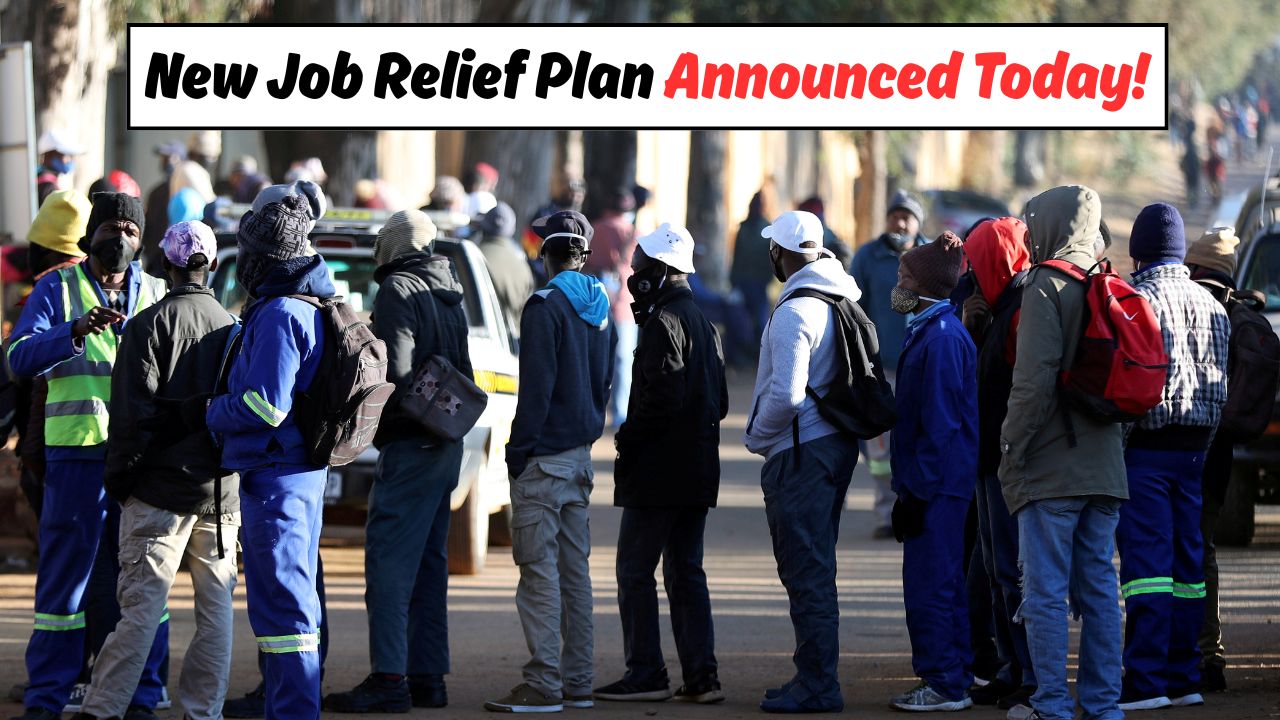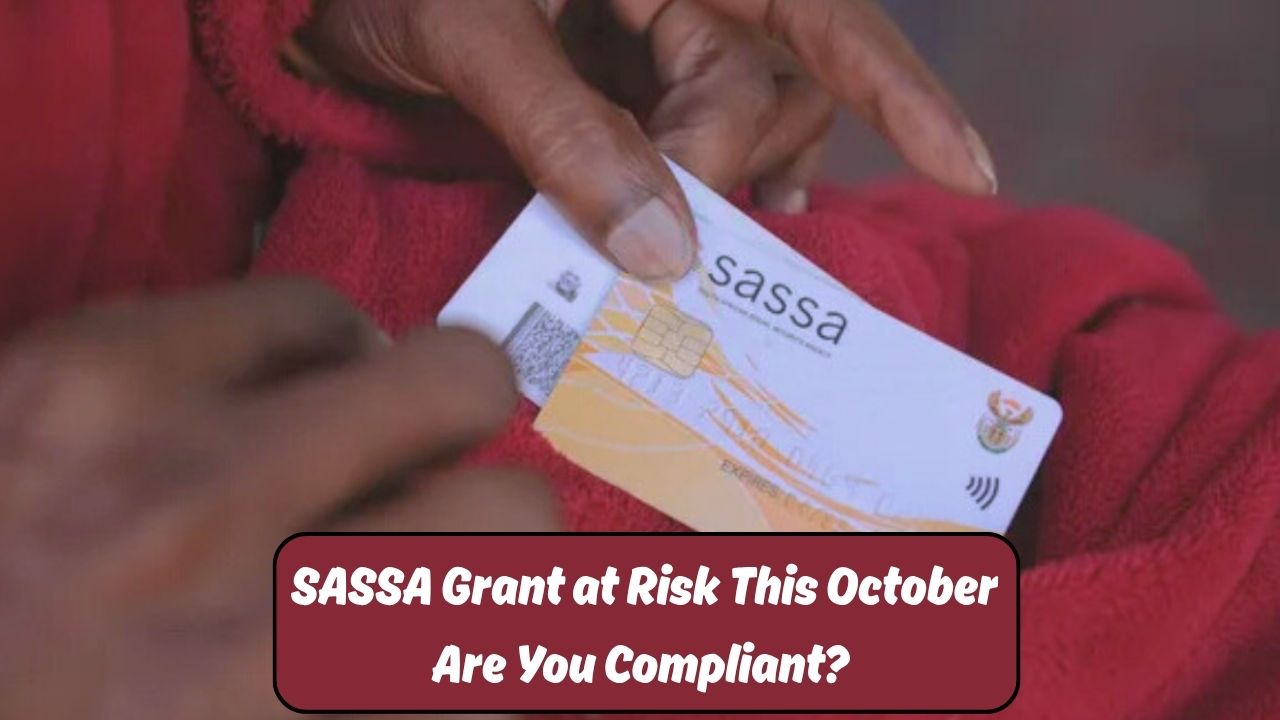New Job Relief Plan – As of mid-2025, South Africa’s unemployment rate has surged to a staggering 34.2%, making it one of the highest globally. This sharp increase has sent shockwaves through the nation’s economy and society. Millions of youth remain jobless, and skilled professionals are struggling to find long-term opportunities. The effects of the COVID-19 pandemic, combined with a sluggish economy, widespread poverty, and inadequate industrial growth, have compounded the crisis. To tackle this challenge, the South African Government has launched a comprehensive Job Relief Plan aimed at creating immediate employment opportunities while also laying a foundation for sustainable economic development. This article explores the key highlights of the plan, sectors targeted, funding structure, eligibility criteria, and how South Africans can benefit from it.
Government’s Job Relief Plan: A Lifeline Amid Crisis
The new Job Relief Plan is designed to address immediate unemployment needs while supporting long-term job creation.
- Budget Allocation: R60 Billion over 2 years
- Job Creation Target: 2 million temporary and permanent jobs
- Start Date: 15 August 2025
- Duration: Initial phase of 24 months
- Focus Areas: Youth employment, infrastructure, rural development, small business
Sectors Targeted Under the Job Relief Initiative
The government has identified key sectors that can generate maximum employment quickly while stimulating economic revival.
| Sector | Jobs Created (Est.) | Focus Projects | Allocation (R Billion) |
|---|---|---|---|
| Infrastructure | 600,000 | Road repairs, bridges, housing | 20 |
| Agriculture | 300,000 | Farm subsidies, irrigation projects | 10 |
| Education Support | 250,000 | School assistants, e-learning tutors | 5 |
| Health Services | 200,000 | Clinic staff, health awareness drives | 6 |
| Small Business Aid | 300,000 | Funding and training for entrepreneurs | 10 |
| Green Energy | 150,000 | Solar panel projects, recycling hubs | 9 |
How the Job Relief Plan Will Work
The government has laid out a phased approach to ensure transparency, impact, and efficient implementation.
- Phase 1 (Aug–Dec 2025): Launch in top 9 provinces with highest unemployment.
- Phase 2 (Jan–Jul 2026): Expansion to rural and township areas.
- Phase 3 (Aug 2026 onward): Transition from temporary to permanent job roles.
- Digital Job Portals: A new “WorkSA” platform will match applicants with jobs.
- Private Sector Partnerships: R12 billion expected from private co-investors.
- Monthly Stipends: Minimum of R4,200/month for temporary roles.
Who Can Apply? Eligibility and Documents Required
All unemployed South African citizens aged 18–55 can apply. Priority will be given to youth, women, and people with disabilities.
| Criteria | Details |
|---|---|
| Citizenship | Must be a South African ID holder |
| Age Limit | 18 to 55 years |
| Employment Status | Must be currently unemployed |
| Educational Requirement | Grade 9 and above (some roles need matric) |
| Background Check | No criminal history (except petty offences) |
| Income Cap | Not earning above R3,500/month |
Documents Needed:
- South African ID
- Proof of residence
- Updated CV
- Matric certificate (if applicable)
- Bank account details
Key Benefits of the Government’s Plan
This relief program is not just about temporary jobs; it aims to bring structural change.
- Skill Development: Free training in digital skills, plumbing, and solar installations.
- Permanent Jobs: 40% of roles will transition into permanent government or private positions.
- Support for Women: 60% of roles in health and education sectors reserved for women.
- Economic Upliftment: Boost to township and rural economies through local hiring.
- Youth-Focused Programs: Internships and apprenticeships for recent graduates.
Digital and Grassroots Application Support
While many South Africans can apply online, special offline support will be provided to those in rural areas or without internet access.
- WorkSA Online Portal: A mobile-friendly job application platform
- Post Office Registration Booths: Set up in 500+ locations
- SMS Alerts for Updates: Job openings, interview dates via mobile alerts
- NGO and Municipal Support: Help desks for filling forms in local languages
Challenges and Public Response
Public reaction has been largely positive, but some challenges and criticisms are already surfacing:
- Logistical Delays: Complaints about long queues at registration booths
- Digital Divide: Many rural youth lack access to internet or smartphones
- Stipend Delays: In previous relief programs, some faced payment backlogs
- Skepticism: Concerns that jobs may be politically biased or mismanaged
Despite these issues, the scale and intent of the initiative mark a significant shift in how the government approaches joblessness.
South Africa’s 34.2% unemployment rate is more than a number—it reflects the hardship of millions. With this new Job Relief Plan, the government seeks to provide hope, income, and dignity. While challenges remain, the combined focus on infrastructure, education, agriculture, and digital access can potentially shift the narrative from crisis to recovery. South Africans are urged to stay informed and take timely action to benefit from this life-changing opportunity.
FAQs
Q1. When does the Job Relief Plan begin?
A1. The first phase starts on 15 August 2025 in nine provinces.
Q2. Can students or part-time workers apply?
A2. Only those who are fully unemployed and not earning over R3,500/month are eligible.
Q3. Where can I apply for these jobs?
A3. Through the new WorkSA digital portal or at designated Post Office booths.
Q4. How much stipend will I receive?
A4. Temporary workers will earn a minimum of R4,200 per month.
Q5. Will these jobs become permanent?
A5. Yes, about 40% of the roles are expected to transition into permanent jobs.




